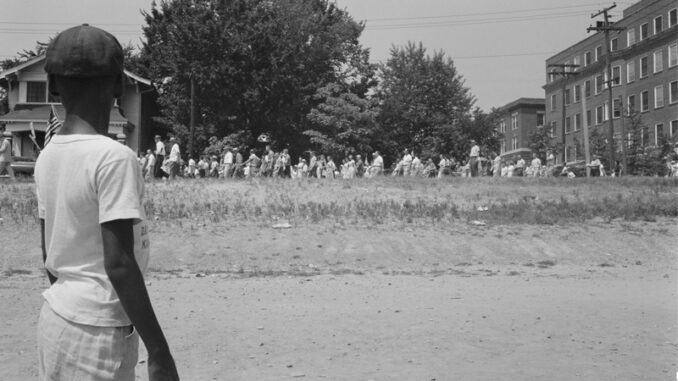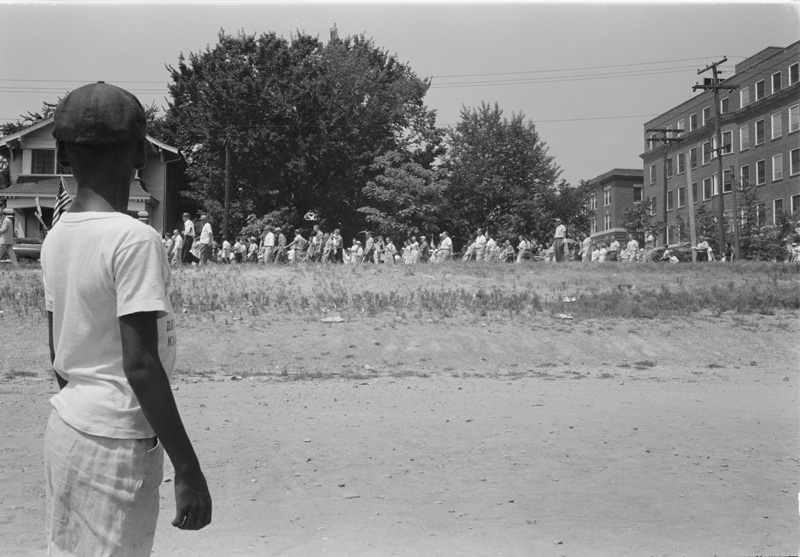
Studying history sometimes focuses on a particular moment in time or a significant event in someone’s life: Paul Revere’s midnight ride, Sacagawea’s journey through the Louisiana Territory, Harriet Beecher Stowe’s publication of Uncle Tom’s Cabin, Neil Armstrong’s moonwalk. But a lot of history happens when the spotlight is not shining on someone. In the After the Fact series, btw takes a look at historical individuals after their spotlight moment. How did their experience change them–in both positive and negative ways?
The first subject of the After the Fact series is Elizabeth Eckford.
Who Was She?
Elizabeth Eckford was one of the Little Rock Nine, the group of African American students who integrated Little Rock Central High School in Little Rock, Arkansas in 1957. This was a result of the landmark Supreme Court decision in Brown v. Board of Education of Topeka, Kansas, which ordered the integration of public schools across the nation. Fifteen-year-old Eckford and the rest of the Little Rock Nine were recruited to attend the all-white Central High to test whether or not Arkansas would really follow through with the order to integrate the schools.

Credit: Library of Congress, Prints & Photographs Division [LC-DIG-ppmsca-03094]
Related Link: Click this link to see a copy of Will Counts famous photograph in the Archives Photograph Collection of Indiana University.
What Happened Next?
Though Eckford and the other members of the Little Rock Nine eventually entered the school, they faced regular acts of violence against them. At one point, Eckford was thrown down a flight of stairs. She did not graduate from Little Rock Central High School, but she had enough credits to attend Knox College in Illinois, and later Central State University in Wilberforce, Ohio, where she earned a Bachelors of Arts degree in history. She served five years in the U.S. Army and later worked as a reporter, history teacher, waitress, welfare worker, and more.
Despite Eckford’s historical legacy of being one of the most famous people to integrate segregated schools in modern American history , she was never completely able to escape the shadow of racism and violence in her life. When one of her two sons, Erin, was 26, he was shot and killed by Little Rock police. He was armed at the time, and suffered from mental illness; Eckford often stated that she believed his death was a “suicide by cop.”
Related Link: Learn more about Elizabeth Eckford’s own view of her historic experience by visiting the Web site Facing History and Ourselves and reading the contribution Eckford made In Her Own Words.
Eckford also won several prestigious awards for her role in the civil rights movement. In 1993, she received the Father Joseph Blitz Award, but sharef the honor with Hazel Bryan Massery, the segregationist white student who was captured screaming at Eckford in the famous photograph taken in 1957.
The two women read their acceptance speeches together and briefly reconciled, but later went their separate ways. The pain of that moment was never fully healed between the two women, even decades later. In 1999, President Bill Clinton presented Eckford and the other members of the Little Rock Nine with Congressional Gold Medals.
Where Is She Now?
Eckford, who is currently 76 years old, is a probation officer in Little Rock. Earlier this year, she released a children’s book called The Worst First Day: Bullied While Desegregating Central High.
